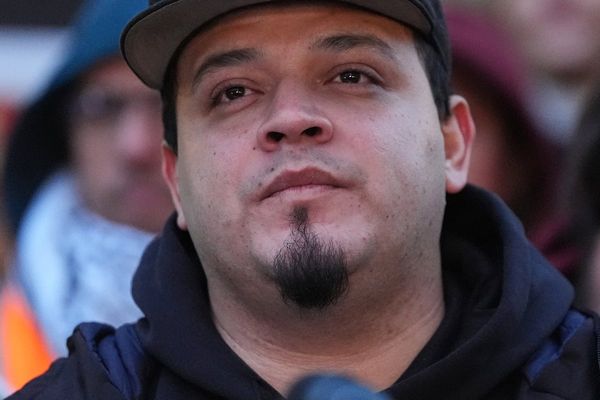
When the first people arrived at the National Museum of Vanuatu after the monster 7.3 magnitude earthquake that struck Port Vila in December, they were distraught.
"I'd never seen something like this before. It was all mess," museum curator Kaitip Kami told AAP.
"Objects had fell off from their showcases, we had 13 showcases which were destroyed ... the museum didn't even look like a museum."

Museum staff began a mighty clean-up effort, given the internal damage and displacement.
Housed in the Vanuatu Cultural Centre, the museum holds art, cultural artefacts and taxidermied birds in its priceless collection.
While the buildings have been cleared of structural damage, some pieces have been lost, including thousands-of-years-old Lapita pottery, smashed and unsalvageable among broken glass.
Fortunately, Mr Kami reported ancestral remains were held on lower shelves, so "when they fell off, they were okay".
Ni-Vanuatu norms necessitate the repair of broken items to be conducted only by the tribes from which they came.
"In our culture, if you want to make or fix these objects, you have to have the right," Mr Kami, who hails from Malakula, said.
"Some people from my island where I come from ... we have a lot of objects that were broken, so we have to get people from that island who own those artefacts, to fly all the way from the island to Port Vila.
"Once we get the funds, we'll bring some people to come to fix the objects."

Funding is at the heart of the challenge facing Vanuatu's curators as they attempt to preserve the Melanesian nation's unique history.
Mr Kamo's position is funded by the government of Vanuatu - which is, per capita, the poorest nation in the Pacific - but he says there is no extra money for upkeep.
They are fundraising online at vanuatumuseumdisasterrelief.com to help the earthquake recovery but broader challenges remain.
Museums require predictable climactic environments to store wares appropriately: a difficulty enhanced by the unrelenting heat of the Pacific and the various disasters, including earthquakes and cyclones that Vanuatu faces.
Counterparts at the Australian Museum are also helping, visiting this month to scope the museum's needs.
"They have a huge collection, a very important and significant collection here ... and it is overcrowded," Heather Bleechmore, of the Australian Museum, said.
"They're operating with limited resources and limited budgets, human resources as well as finances. The building here is very good, but the infrastructure needs updating.
"So the approach is to try and help the museum get as much control over the environment within the collection stores and within the gallery space as possible."

The Australian Museum's outreach comes courtesy of the US Embassy, which last year funded a year-long "Pasifika Tahui" project to undertake missions to Papua New Guinea, Vanuatu, Solomon Islands and Tonga to "look at cultural revitalisation and preservation in the face of climate change".
However, their own funding has a cliff, given the change of direction under US President Donald Trump, who has cut or frozen the bulk of American development assistance.
Melissa Sutton said the Australian Museum - which holds a significant store of Pacific treasures in its own collection - would "100 per cent" be looking for future funding, which would benefit both the Pacific and Australian museums.
"We're learning a lot about how to care appropriately for these cultural artifacts and the approach. It is a reciprocal relationship where we're also learning," the museum's Pasifika collection officer said.







